Guide to the different versions of Funhouse pinball machines
Williams Funhouse pinball machine, made in 1990, is still considered as one of the most popular and one of the best pinball games ever. People still love it, and for a game of this age it still sells for a lot of money.
The production run was pretty big with over 10000 machines produced. Parts for this game still are high in demand, even playfields have been run two times.. once by Williams in Diamondplate version, and recently by Illinois Pin Ball. New ramps and plastics are also available so people can make their game look as new.
At the start of the production run there were also some differences, and that's where this article is about.
First there were about 10 prototype games made. These probably have red lamp boards, maybe marked with an 'X' in their serial number, and also had an additional small blue standup target: prototype games have targets that spell S-T-E-P-S, while all other games spell S-T-E-P: the small target between the mystery mirror and the hidden hallway (so left of Rudy) was dropped.
There were also about 200 sample games built. Unlike other games where the sample run has little differences, Funhouse sample machines have some noticeable changes. This was mainly because Williams was changing from the System 11 boardset towards the new WPC boardset, and not everything was completed.
Funhouse sample games have the old system 11 type of siderails, a start button that sticks out of the cabinet, it still uses the System 11 sound board (together with special power board), and most important: it has a DiamondPlated playfield.
Backbox

The most important change is the System 11 soundboard with additional power board,
at the top left corner of the backbox.
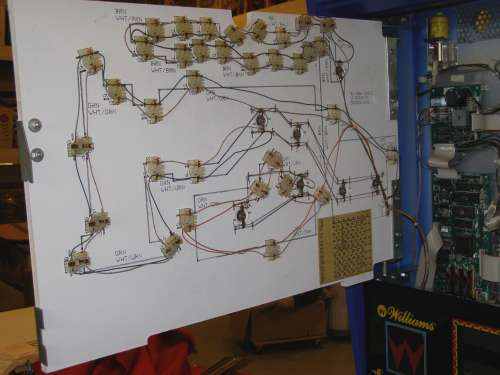
The backbox wiring is also slightly different from regular production run games: it has
a lot more lamps at the top and the wires are guided different.
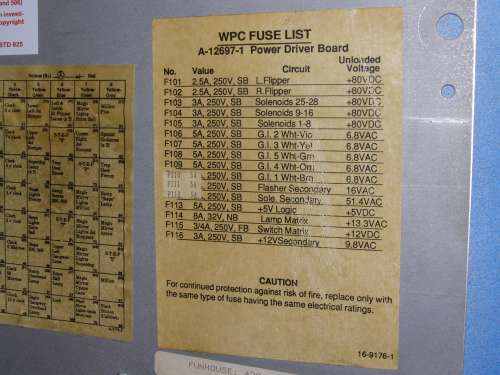
The fuse list is also modified with a sticker.
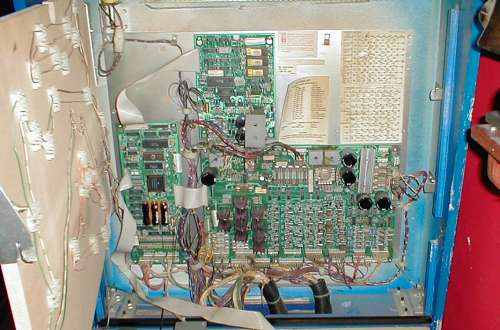
This is a picture of a regular production Funhouse. A WPC style soundboard, wiring is
different on the insert panel and the decals with fuse list and switch matrix are also different.
Playfield
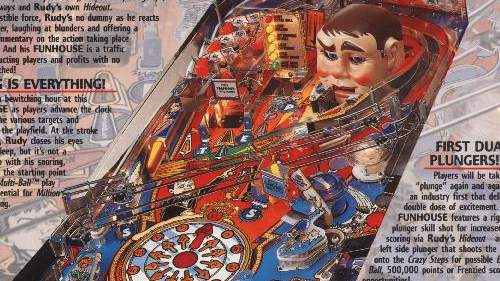
Real prototypes (only about 10 made) have the P-target and insert (of steps) at the top of the playfield,
as can be seen on the flyer..
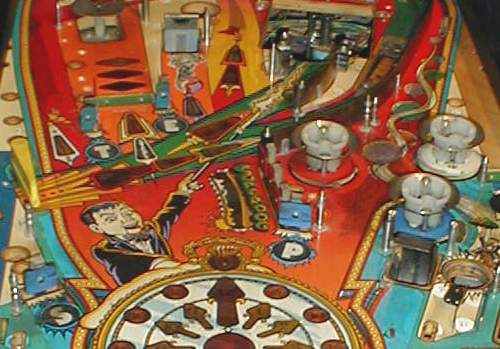
Every other playfield only has STEP targets and inserts.

Sample games have the DiamondPlate logo under the right flipper.
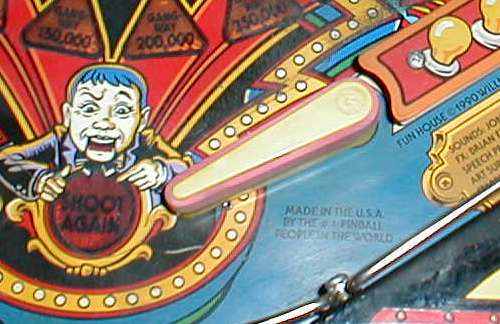
This is missing from the regular production run. Note how the blue color stays more vivid
on Diamondplated games.
Cabinet
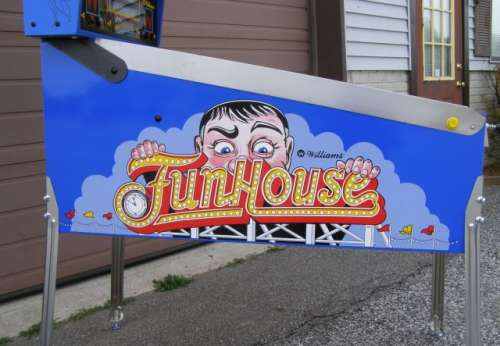
Sample / Proto games used the wide system 11 style of siderails that go around the flipper buttons.
The cabinet artwork is a decal.
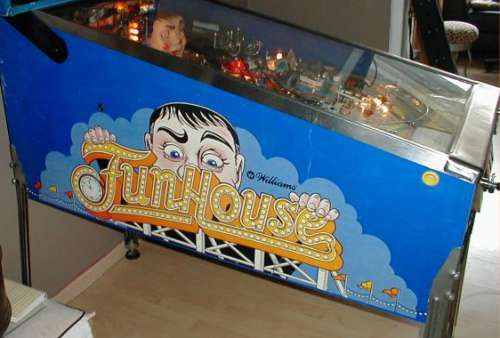
Production run Funhouses used the smaller WPC style of siderails.
The cabinet artwork is screened (like on other WPC games).

The start button sticks out of the cabinet on Sample and proto games.

It's recessed into the cabinet on production games, like other WPC games.
Funhouse Prototype differences
At this site you see pictures of a real prototype Funhouse.
Additional differences compared to sample/regular games are:
- The top steps ramp pointing hand plastic says "Lite quick multiball w/lit"; later versions have the 500,000 points plastic.
- A few plastics are different. Like the plastic with orange and red balloons to the left of the gangway sign, which is consistent with the flyer.
Some of the plastics, and also the original ramps, have been hand-cut for fit.
- It has the Diamond Plate logo but it doesn't show the part number below the logo. On sample games I've seen, the part number is listed too.
- The proto on the flyer shows the red "make-up" on Rudy's face sprayed on in a wider fan pattern, but mine has smaller round dots.
I suppose my Rudy face could have been switched at some point, or they might have experimented with different styles on different protos.
- The registration of the red ink is off a bit on my playfield. I suppose they used some of the early attempts at lining them up as
the first tests in games.
- Sample Funhouses have a protruding start button, but this proto has a flush start button. The picture of the proto game on
the Funhouse flyer also has a flush start button.
Pictures of sample game by Doug Huse.
Prototype information : Luther.
Thanks to Korn for his post about this on RGP.
If you're looking for pinball parts, then check out Pinballshop.nl (affiliate link).
